Removing Alpha Case from Laser Powder Bed Fusion Components by Cavitation Abrasive Surface Finishing
Abstract
1. Introduction
2. Materials and Methods
2.1. Materials
2.2. CASF Treatment
2.3. Surface Texture
2.4. Stress Concentration Factor
2.5. Material Removal
2.6. Residual Stress Measurements
2.7. Optical Microscopy
3. Results
3.1. Surface Texture
3.2. Alpha Case Removal
3.3. Residual Stress
4. Discussion
5. Conclusions
- i.
- The CASF treatment improved the surface texture of the treated hexbars as evidenced by a reduction in the average roughness and a decrease in the effective surface stress concentration posed by the topography. The treatment effectiveness was greatest for the surfaces oriented perpendicular to the incident jet, but some improvement was realized regardless of the surface orientation.
- ii.
- The CASF treatment was successful at removing a majority of the alpha case layer from the targets. The greatest effectiveness was observed at low feedrate and for the surfaces treated with direct line of sight. Some residual alpha case was apparent on the hexbars after treatment that was located within the surface valleys, essentially shielded from the abrasive action. However, the alpha case did not significantly reduce the effective material removal rate of the CASF treatment.
- iii.
- The CASF process introduced compressive residual stresses on the treated surfaces, reaching up to 600 MPa. Although the residual stress was highest in the hexbar targets without alpha case and when treated at feedrate of 60 mm/min, neither the alpha case or range of feedrate appeared to have a significant effect on the residual stress overall.
- iv.
- The CASF process was most effective in treatment of the surfaces that were directly within the line of sight of the incident jet. There was also a reduction in surface roughness and introduction of compressive residual stress within the surfaces oriented obliquely to the jet (≤60°). However, there was limited change in the surfaces that were shielded from the line of sight.
Supplementary Materials
Author Contributions
Funding
Data Availability Statement
Acknowledgments
Conflicts of Interest
References
- Diegel, O.; Nordin, A.; Motte, D. Additive Manufacturing Technologies. In Springer Series in Advanced Manufacturing; Springer: Singapore, 2019. [Google Scholar] [CrossRef]
- Galati, M.; Calignano, F.; Viccica, M.; Iuliano, L. Additive manufacturing redesigning of metallic parts for high precision machines. Crystals 2020, 10, 161. [Google Scholar] [CrossRef]
- Zegard, T.; Paulino, G.H. Bridging topology optimization and additive manufacturing. Struct. Multidiscip. Optim. 2015, 53, 175–192. [Google Scholar] [CrossRef]
- Allen, J. An Investigation into the Comparative Costs of Additive Manufacture vs. Machine from Solid for Aero Engine Parts. Cost Effective Manufacture via Net-Shape Processing, DTIC ADA521730, 2006. Available online: https://apps.dtic.mil/sti/tr/pdf/ADA521730.pdf (accessed on 7 September 2024).
- Ezugwu, E.O.; Wang, Z.M. Titanium alloys and their machinability—A review. J. Mater. Process. Technol. 1997, 68, 262–274. [Google Scholar] [CrossRef]
- Williams, J.C.; Boyer, R.R. Opportunities and issues in the application of titanium alloys for aerospace components. Metals 2020, 10, 705. [Google Scholar] [CrossRef]
- Mojib, M.; Soyama, H.; Sanders, D.; Arola, D.; Ramulu, M. The High Cycle Fatigue Behavior of Surface Treated Electron Beam Melted Titanium Ti6Al4V. In Proceedings of the ASME International Mechanical Engineering Congress and Exposition, Proceedings (IMECE), Online, 1–5 November 2021. [Google Scholar] [CrossRef]
- Schur, R. Laser Powder Bed Fusion of Ti-6Al-4V: A Round Robin Analysis of Mechanical Property Variability. Ph.D. Dissertation, University of Washington, Seattle, DC, USA, 2023. [Google Scholar]
- Colosimo, B.M.; Huang, Q.; Dasgupta, T.; Tsung, F. Opportunities and challenges of quality engineering for additive manufacturing. J. Qual. Technol. 2018, 50, 233–252. [Google Scholar] [CrossRef]
- Gockel, J.; Sheridan, L.; Narra, S.P.; Klingbeil, N.W.; Beuth, J. Trends in Solidification Grain Size and Morphology for Additive Manufacturing of Ti-6Al-4V. JOM 2017, 69, 2706–2710. [Google Scholar] [CrossRef]
- Atkinson, H.V.; Davies, S. Fundamental aspects of hot isostatic pressing: An overview. Metall. Mater. Trans. A 2000, 31, 2981–3000. [Google Scholar] [CrossRef]
- Dekhtyar, A.I.; Bondarchuk, V.I.; Nevdacha, V.V.; Kotko, A.V. The effect of microstructure on porosity healing mechanism of powder near-β titanium alloys under hot isostatic pressing in α + β-region: Ti-10V-2Fe-3Al. Mater. Charact. 2020, 165, 110393. [Google Scholar] [CrossRef]
- Abu-Issa, A.; Lopez, M.; Pickett, C.; Escarcega, A.; Arrieta, E.; Murr, L.E.; Wicker, R.B.; Ahlfors, M.; Godfrey, D.; Medina, F. Effects of altered hot isostatic pressing treatments on the microstructures and mechanical performance of electron beam melted Ti-6Al-4V. J. Mater. Res. Technol. 2020, 9, 8735–8743. [Google Scholar] [CrossRef]
- Gaddam, R.; Sefer, B.; Pederson, R.; Antti, M.L. Study of alpha-case depth in Ti-6Al-2Sn-4Zr-2Mo and Ti-6Al-4V. IOP Conf. Ser. Mater. Sci. Eng. 2013, 48, 0120022013. [Google Scholar] [CrossRef]
- Naydenkin, E.V.; Mishin, I.P.; Ratochka, I.V.; Lykova, O.N.; Zabudchenko, O.V. The effect of alpha-case formation on plastic deformation and fracture of near β titanium alloy. Mater. Sci. Eng. A 2020, 769, 138495. [Google Scholar] [CrossRef]
- Gockel, J.; Sheridan, L.; Koerper, B.; Whip, B. The influence of additive manufacturing processing parameters on surface roughness and fatigue life. Int. J. Fatigue 2019, 124, 380–388. [Google Scholar] [CrossRef]
- Obilanade, D.; Dordlofva, C.; Törlind, P. Surface roughness considerations in design for additive manufacturing—A literature review. In Proceedings of the International Conference on Engineering Design (ICED21), Gothenburg, Sweden, 16–20 August 2021. [Google Scholar] [CrossRef]
- Lizzul, L.; Bertolini, R.; Ghiotti, A.; Bruschi, S. Effect of AM-induced Anisotropy on the Surface Integrity of Laser Powder Bed Fused Ti6Al4V Machined Parts. Procedia Manuf. 2020, 47, 505–510. [Google Scholar] [CrossRef]
- Jurg, M.; Medvedev, A.E.; Yan, W.; Molotnikov, A. Surface improvement of laser powder bed fusion processed Ti6Al4V for fatigue applications. Addit. Manuf. Lett. 2022, 3, 100070. [Google Scholar] [CrossRef]
- Soe, A.N.; Sombatmai, A.; Promoppatum, P.; Srimaneepong, V.; Trachoo, V.; Pandee, P. Effect of post-processing treatments on surface roughness and mechanical properties of laser powder bed fusion of Ti–6Al–4V. J. Mater. Res. Technol. 2024, 32, 3788–3803. [Google Scholar] [CrossRef]
- Bertolini, J.C. Hydrofluoric acid: A review of toxicity. J. Emerg. Med. 1992, 10, 163–168. [Google Scholar] [CrossRef]
- Deshmukh, V.; Kadam, R.; Joshi, S.S. Removal of alpha case on titanium alloy surfaces using chemical milling. Mach. Sci. Technol. 2017, 21, 257–278. [Google Scholar] [CrossRef]
- Kahlin, M.; Ansell, H.; Basu, D.; Kerwin, A.; Newton, L.; Smith, B.; Moverare, J. Improved fatigue strength of additively manufactured Ti6Al4V by surface post processing. Int. J. Fatigue 2020, 134, 105497. [Google Scholar] [CrossRef]
- Maleki, E.; Bagherifard, S.; Bandini, M.; Guagliano, M. Surface post-treatments for metal additive manufacturing: Progress, challenges, and opportunities. Addit. Manuf. 2021, 37, 101619. [Google Scholar] [CrossRef]
- Grover, H.J. Factors by which shot peening influences the fatigue strength of parts. In SAE Technical Papers; SAE International: Warrendale, PA, USA, 1954. [Google Scholar] [CrossRef]
- Azhari, A.; Schindler, C.; Hilbert, K.; Godard, C.; Kerscher, E. Influence of waterjet peening and smoothing on the material surface and properties of stainless steel 304. Surf. Coatings Technol. 2014, 258, 1176–1182. [Google Scholar] [CrossRef]
- Ramulu, M.; Kunaporn, S.; Arola, D.; Hashish, M.; Hopkins, J. Waterjet machining and peening of metals. J. Press. Vessel. Technol. 1999, 122, 90–95. [Google Scholar] [CrossRef]
- Arola, D.D.; McCain, M.L. Abrasive waterjet peening: A new method of surface preparation for metal orthopedic implants. J. Biomed. Mater. Res. 2000, 53, 536–546. [Google Scholar] [CrossRef] [PubMed]
- Arola, D.; Alade, A.E.; Weber, W. Improving fatigue strength of metals using abrasive waterjet peening. Mach. Sci. Technol. 2006, 10, 197–218. [Google Scholar] [CrossRef]
- Yao, S.L.; Wang, G.-Y.; Yu, H.; Wang, J.; Li, K.-S.; Liu, S.; Zhang, X.-C.; Tu, S.-T. Influence of submerged micro-abrasive waterjet peening on surface integrity and fatigue performance of TA19 titanium alloy. Int. J. Fatigue 2022, 164, 107076. [Google Scholar] [CrossRef]
- Soyama, H. Cavitation peening: A review. Metals 2020, 10, 270. [Google Scholar] [CrossRef]
- Soyama, H.; Korsunsky, A.M. A critical comparative review of cavitation peening and other surface peening methods. J. Mech. Work. Technol. 2022, 305, 117586. [Google Scholar] [CrossRef]
- Sato, M.; Takakuwa, O.; Nakai, M.; Niinomi, M.; Takeo, F.; Soyama, H. Using Cavitation Peening to Improve the Fatigue Life of Titanium Alloy Ti-6Al-4V Manufactured by Electron Beam Melting. Mater. Sci. Appl. 2016, 07, 181–191. [Google Scholar] [CrossRef][Green Version]
- Soyama, H.; Sanders, D. Use of an Abrasive Water Cavitating Jet and Peening Process to Improve the Fatigue Strength of Titanium Alloy 6Al-4V Manufactured by the Electron Beam Powder Bed Melting (EBPB) Additive Manufacturing Method. JOM 2019, 71, 4311–4318. [Google Scholar] [CrossRef]
- Sanders, D.G.; Soyama, H.; De Silva, C. Use of Cavitation Abrasive Surface Finishing to Improve the Fatigue Properties of Additive Manufactured Titanium Alloy Ti6Al4V; SAE Technical Paper, Aerotech, Paper No. 2021-01-0024; SAE International: Warrendale, PA, USA, 2021. [Google Scholar] [CrossRef]
- ASTM F2924-14; Standard Specification for Additive Manufacturing Titanium-6 Aluminum-4 Vanadium with Powder Bed Fusion. ASTM International: West Conshohocken, PA, USA, 2021.
- ISO 4288:1998; Geometrical Product Specifications (GPS)—Surface Texture: Profile Method—Rules and Procedures for the Assessment of Surface Texture. International Organization for Standardization: Geneva, Switzerland, 1998; Volume 1998.
- Arola, D.; Williams, C.L. Estimating the fatigue stress concentration factor of machined surfaces. Int. J. Fatigue 2002, 24, 923–930. [Google Scholar] [CrossRef]
- Arola, D.; Ramulu, M. An Examination of the Effects from Surface Texture on the Strength of Fiber Reinforced Plastics. J. Compos. Mater. 1999, 33, 102–123. [Google Scholar] [CrossRef]
- Noyan, I.C.; Cohen, J.B. Residual Stress—Measurement by Diffraction and Interpretation; Springer: Cham, Switzerland, 1987. [Google Scholar]
- He, B. Two-Dimensional X-Ray Diffraction; Wiley: Hoboken, NJ, USA, 2009; pp. 249–325. [Google Scholar]
- ASTM E407-07; Designation: E407−07 (Reapproved 2015), Standard Practice for Microetching Metals and Alloys. ASTM International: West Conshohocken, PA, USA, 2015.
- Soyama, H.; Okura, Y. The use of various peening methods to improve the fatigue strength of titanium alloy Ti6Al4V manufactured by electron beam melting. AIMS Mater. Sci. 2018, 5, 1000–1015. [Google Scholar] [CrossRef]
- Chan, K.S. Characterization and analysis of surface notches on Ti-alloy plates fabricated by additive manufacturing techniques. Surf. Topogr. Metrol. Prop. 2015, 3, 044006. [Google Scholar] [CrossRef]
- Mancisidor, A.M.; García-Blanco, M.B.; Quintana, I.; Arrazola, P.J.; Espinosa, E.; Cuesta, M.; Albizuri, J.; Garciandia, F. Effect of Post-Processing Treatment on Fatigue Performance of Ti6Al4V Alloy Manufactured by Laser Powder Bed Fusion. J. Manuf. Mater. Process. 2023, 7, 119. [Google Scholar] [CrossRef]
- Soyama, H.; Kuji, C. Improving effects of cavitation peening, using a pulsed laser or a cavitating jet, and shot peening on the fatigue properties of additively manufactured titanium alloy Ti6Al4V. Surf. Coat. Technol. 2022, 451, 129047. [Google Scholar] [CrossRef]
- Arola, D.; Ramulu, M. Material removal in abrasive waterjet machining of metals a residual stress analysis. Wear 1997, 211, 302–310. [Google Scholar] [CrossRef]
- Arola, D.; Ramulu, M. Material removal in abrasive waterjet machining of metals surface integrity and texture. Wear 1997, 210, 50–58. [Google Scholar] [CrossRef]
- Soyama, H.; Wong, K.L.; Eakins, D.; Korsunsky, A.M. The Effects of Submerged Laser Peening, Cavitation Peening, and Shot Peening on the Improvement of the Torsional Fatigue Strength of Powder Bed Fused Ti6Al4V Produced through Laser Sintering. Int. J. Fatigue 2024, 185, 108348. [Google Scholar] [CrossRef]
- Soyama, H.; Takeo, F. Effect of Various Peening Methods on the Fatigue Properties of Titanium Alloy Ti6Al4V Manufactured by Direct Metal Laser Sintering and Electron Beam Melting. Materials 2020, 13, 2216. [Google Scholar] [CrossRef]

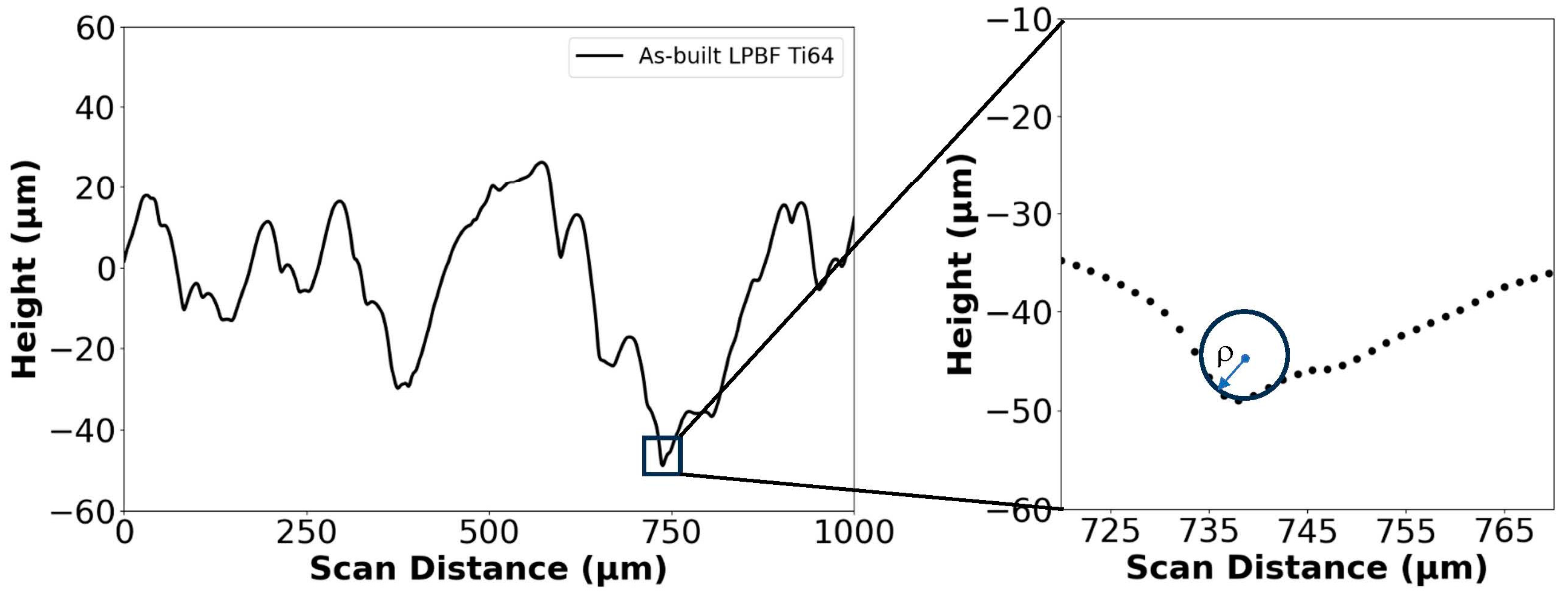


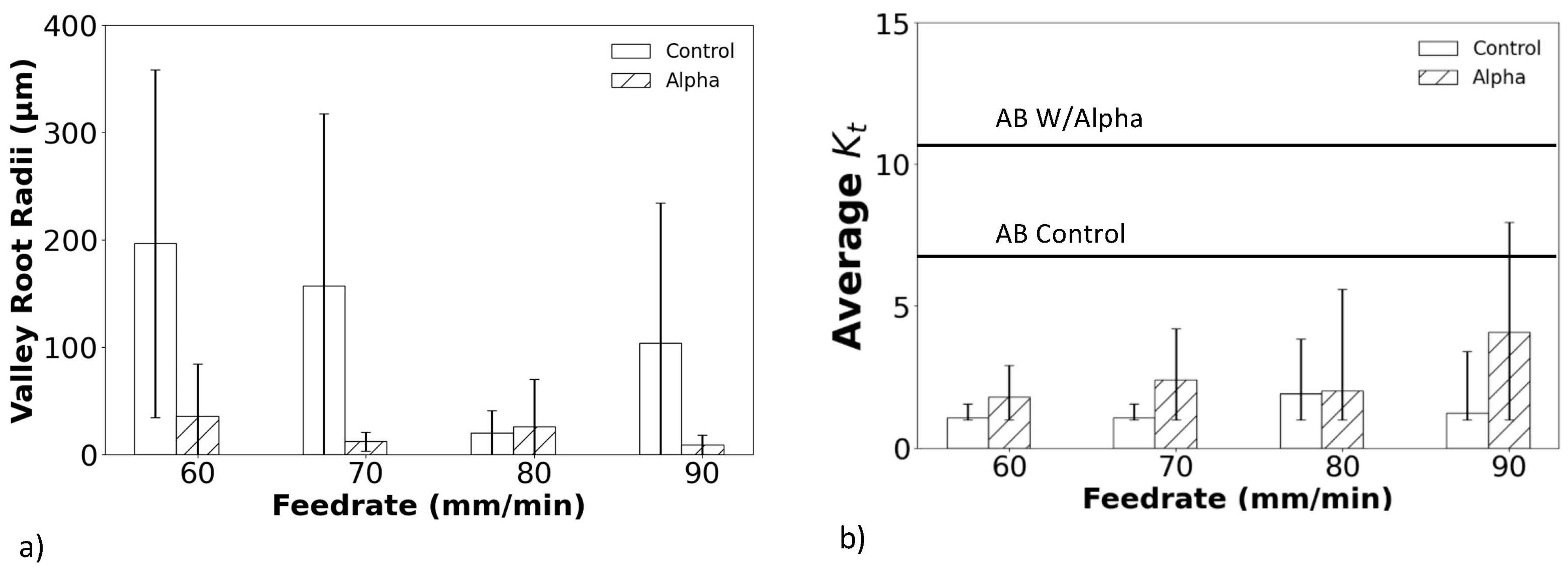

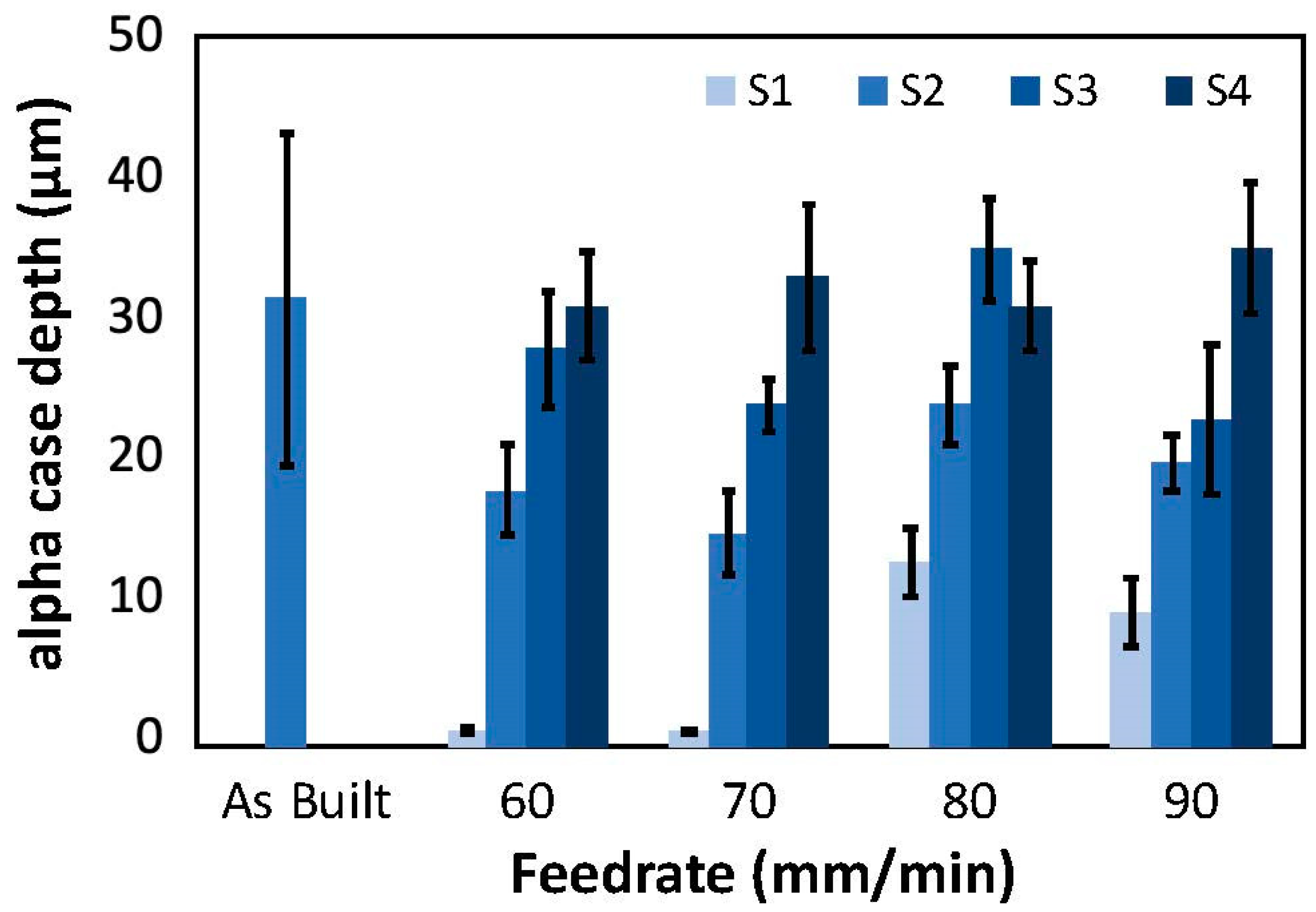

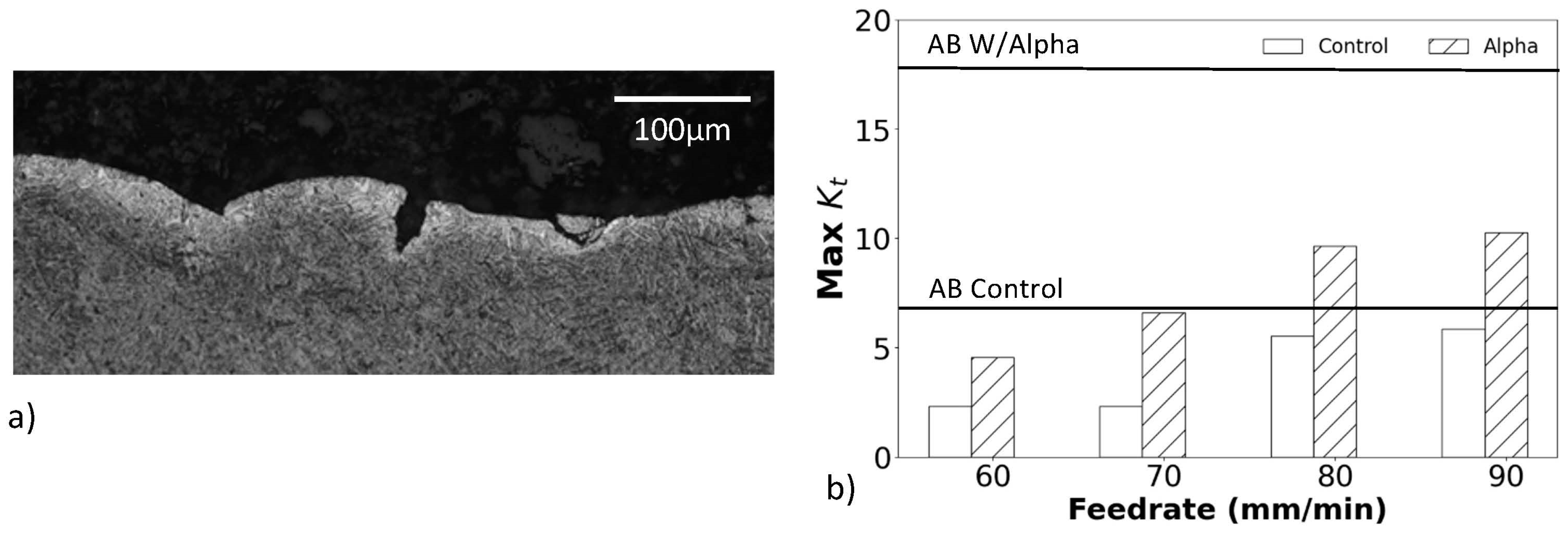
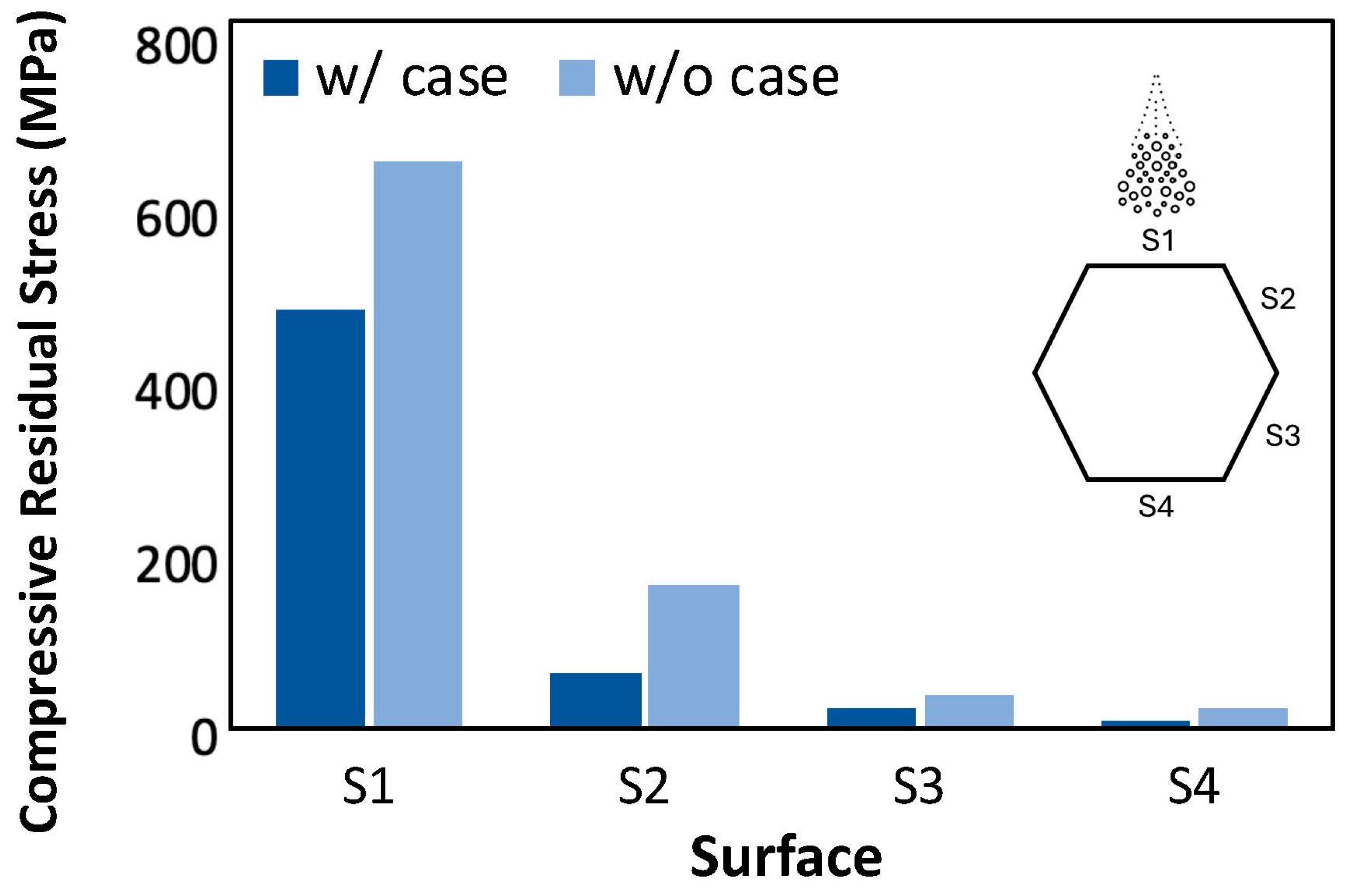
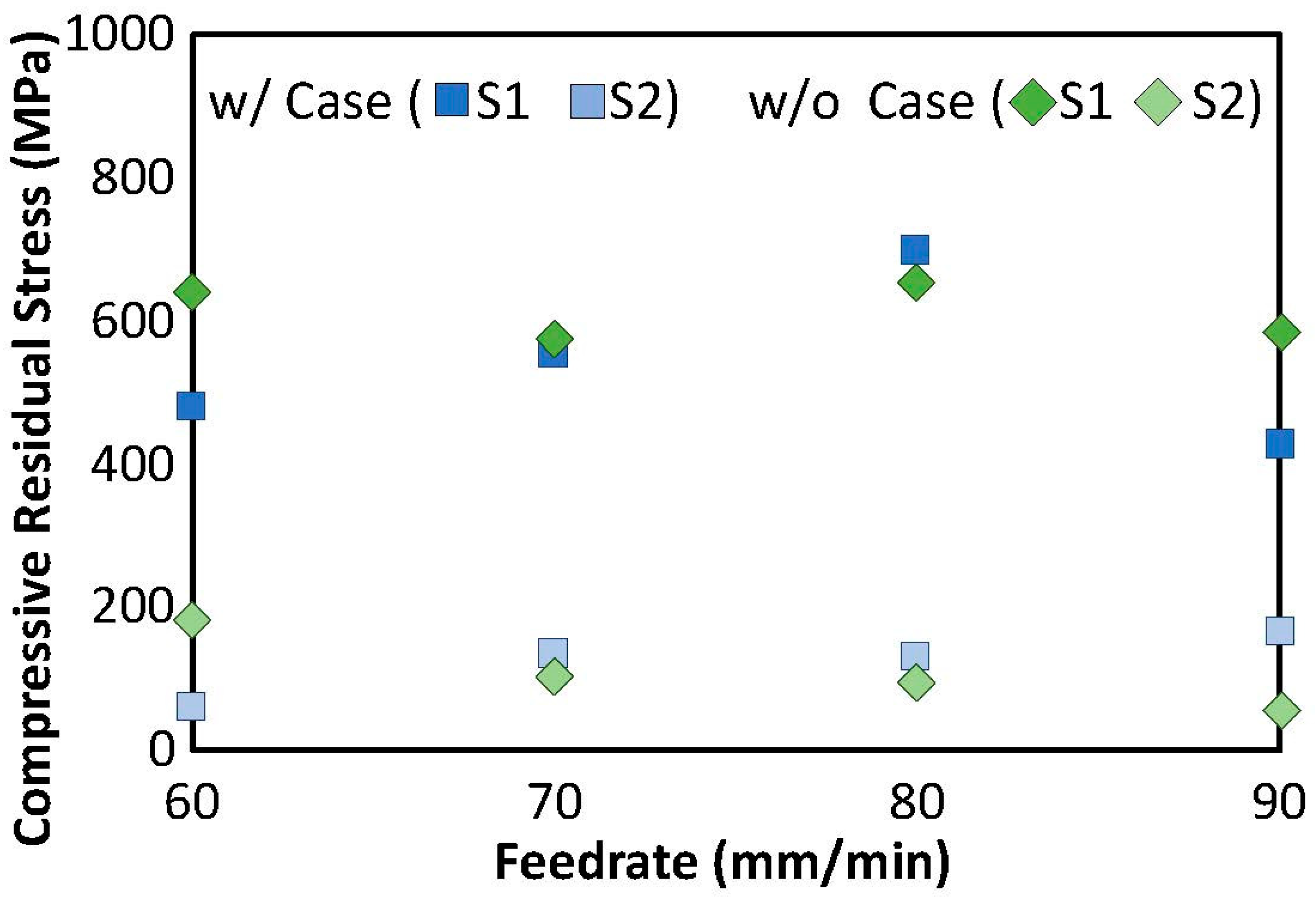
| Surface Treatment | Surface Smoothing | Residual Stresses | Environment Impact | Line of Sight Required |
|---|---|---|---|---|
| Shot peening | Medium | Yes | None | Yes |
| Chem Milling | Large | No | Detrimental | No |
| Waterjet Peening | Medium | Yes | None | No |
| Cavitation Peening | Medium | Yes | None | Yes |
| CASF | Large | Yes | None | In Progress |
Disclaimer/Publisher’s Note: The statements, opinions and data contained in all publications are solely those of the individual author(s) and contributor(s) and not of MDPI and/or the editor(s). MDPI and/or the editor(s) disclaim responsibility for any injury to people or property resulting from any ideas, methods, instructions or products referred to in the content. |
© 2025 by the authors. Licensee MDPI, Basel, Switzerland. This article is an open access article distributed under the terms and conditions of the Creative Commons Attribution (CC BY) license (https://creativecommons.org/licenses/by/4.0/).
Share and Cite
Petram, R.; Wisdom, C.; Montelione, A.; Nouwens, C.; Sanders, D.; Ramulu, M.; Arola, D. Removing Alpha Case from Laser Powder Bed Fusion Components by Cavitation Abrasive Surface Finishing. Materials 2025, 18, 1977. https://doi.org/10.3390/ma18091977
Petram R, Wisdom C, Montelione A, Nouwens C, Sanders D, Ramulu M, Arola D. Removing Alpha Case from Laser Powder Bed Fusion Components by Cavitation Abrasive Surface Finishing. Materials. 2025; 18(9):1977. https://doi.org/10.3390/ma18091977
Chicago/Turabian StylePetram, Rohin, Conall Wisdom, Alex Montelione, Cole Nouwens, Dan Sanders, Mamidala Ramulu, and Dwayne Arola. 2025. "Removing Alpha Case from Laser Powder Bed Fusion Components by Cavitation Abrasive Surface Finishing" Materials 18, no. 9: 1977. https://doi.org/10.3390/ma18091977
APA StylePetram, R., Wisdom, C., Montelione, A., Nouwens, C., Sanders, D., Ramulu, M., & Arola, D. (2025). Removing Alpha Case from Laser Powder Bed Fusion Components by Cavitation Abrasive Surface Finishing. Materials, 18(9), 1977. https://doi.org/10.3390/ma18091977







